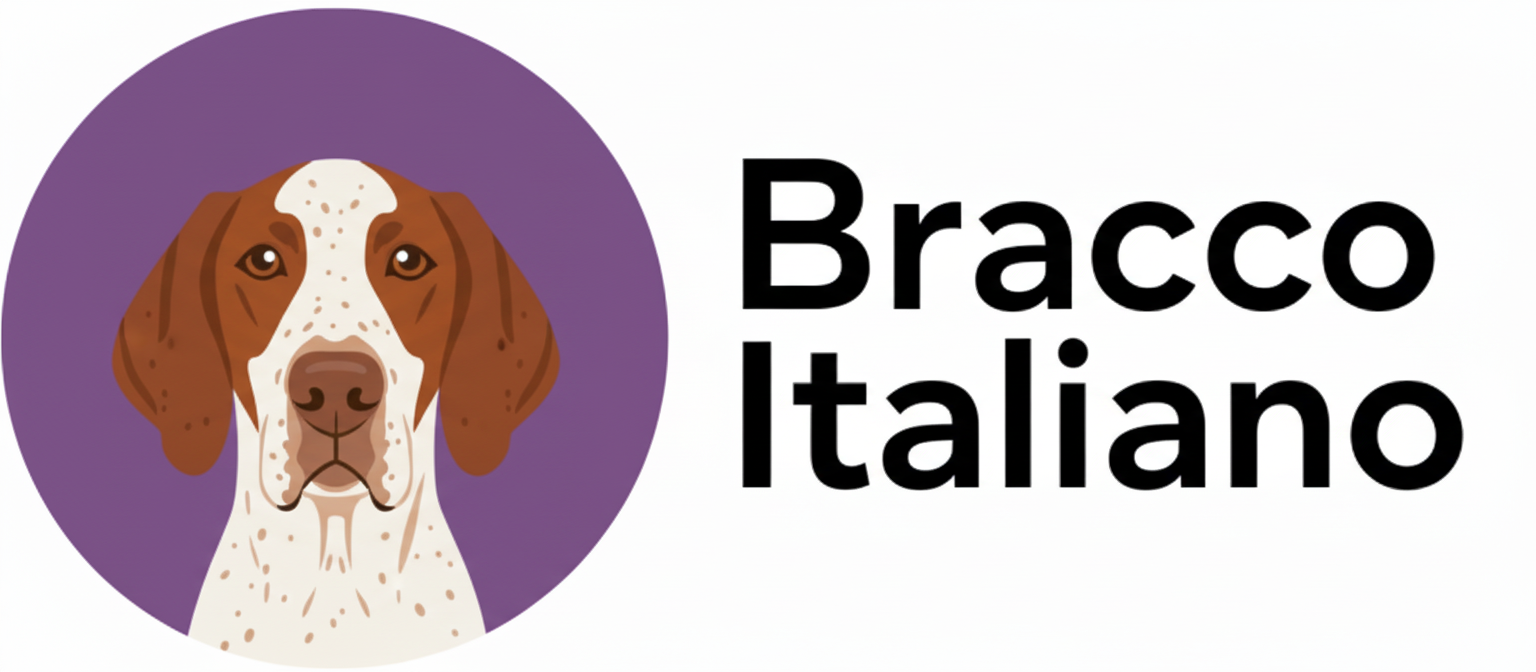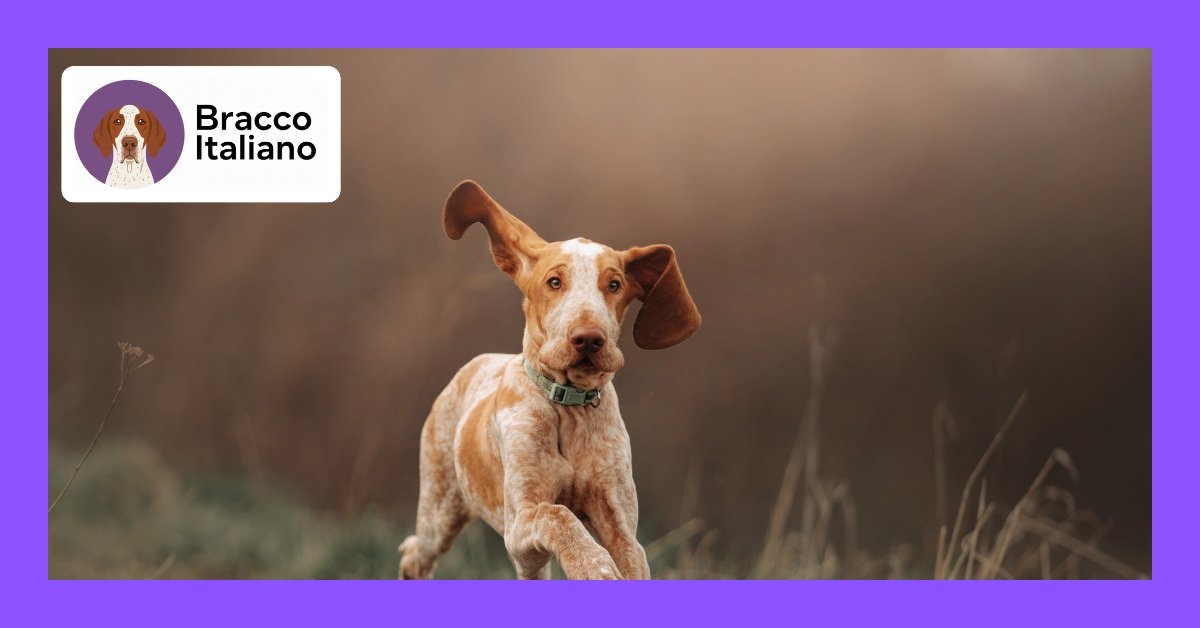Discovering a Bracco Italiano with black nose pigmentation should immediately raise red flags for anyone considering this magnificent Italian hunting breed. While these gentle giants captivate hearts with their hound-like appearance and affectionate temperament, black nose coloration represents a serious deviation from established breed standards that could indicate mixed breeding or genetic anomalies.
According to official breed standards from the FCI, ENCI, and United Kennel Club, any Bracco Italiano displaying black nose pigmentation or traces of black coloration faces immediate disqualification from conformation showing and should never be used in breeding programs. This critical detail affects breed authenticity, purchase decisions, and long-term breeding viability.
Understanding proper nose pigmentation becomes essential as this ancient European pointing breed gains popularity following its recognition as the American Kennel Club’s 200th breed, yet remains relatively rare outside Italy. Let’s explore what acceptable nose colors look like and why black pigmentation matters so much.
What Makes a Bracco Italiano’s Nose Color Standard
The Bracco Italiano with black nose violates every major international breed standard established for this ancient pointing breed. Official documentation clearly outlines acceptable nose pigmentation parameters that exclude black coloration entirely.
FCI and ENCI Standard Requirements
The Fédération Cynologique Internationale (FCI) breed standard specifies that the Bracco Italiano’s nose should be “voluminous, with large well opened nostrils” with color ranging from “brown or pale” tones. The Italian national kennel club (ENCI) provides even more specific guidance, stating nose color “is more or less pink to flesh.”
These standards reflect centuries of selective breeding that established the breed’s distinctive characteristics. The nose should complement the dog’s overall coloration while maintaining the breed’s hunting functionality.
United Kennel Club Disqualifications
The United Kennel Club breed standard explicitly lists disqualifying features that include:
- Split nose formation
- Mucous membranes or skin that are black or have traces of black
- Black, black and white, or tricolor coat patterns
- Any solid color variations outside accepted parameters
This comprehensive list ensures breed purity and maintains the Bracco Italiano’s distinctive appearance that hunters and enthusiasts have preserved for millennia.
Acceptable Nose Colors vs. Disqualifying Black Pigmentation
Distinguishing between acceptable and unacceptable nose pigmentation helps potential owners make informed decisions when evaluating Bracco Italiano puppies or adults.
| Acceptable Colors | Description | Breeding Status |
|---|---|---|
| Brown | Deep chocolate to lighter brown tones | Standard compliant |
| Pink | Light pink to rose-colored pigmentation | Standard compliant |
| Flesh-toned | Natural skin-colored pigmentation | Standard compliant |
| Pale variations | Lighter versions of approved colors | Standard compliant |
| Black or black traces | Any black pigmentation | Disqualified |
Why Black Pigmentation Indicates Problems
A Bracco Italiano with black nose pigmentation suggests several concerning possibilities. Mixed breeding with other pointing breeds or hounds could introduce black pigmentation genes. Genetic anomalies might also produce unexpected coloration that deviates from established breed characteristics.
Additionally, nose color correlates with coat color genetics in many breeds. Since acceptable Bracco Italiano coat colors include only white, white with orange markings, white with chestnut markings, and specific roan patterns, black nose pigmentation often accompanies unacceptable coat variations.
How to Identify Authentic Bracco Italiano Breeding
Protecting yourself from purchasing a Bracco Italiano with black nose requires careful evaluation techniques and knowledge of breed-specific identification markers.
Step-by-Step Nose Inspection Process
- Examine in natural lighting – Artificial lighting can distort color perception
- Check for any black speckling – Even small black spots disqualify the dog
- Inspect nostril rims carefully – Black edges indicate non-standard pigmentation
- Document with clear photographs – Visual evidence helps verify authenticity
- Compare with parent dogs – Both parents should display acceptable nose colors
Additional Breed Authentication Markers
Beyond nose color, authentic Bracco Italianos display specific physical characteristics that complement proper pigmentation. Males typically measure 22-27 inches and weigh 55-88 pounds, while females stand 22-25 inches and weigh 53-86 pounds. For detailed measurements, refer to our Bracco Italiano size chart.
The breed presents “the most hound-like appearance of all gundog breeds” with a large head, droopy jowls, and long, low-set ears. The coat should be “dense, short” and “lies close to the body” with a “sleek and glossy finish.”
Understanding Bracco Italiano Temperament and Training
Whether dealing with a standard Bracco Italiano or unfortunately discovering a Bracco Italiano with black nose, understanding the breed’s temperament helps owners provide appropriate care and training.
Personality Characteristics
Bracco Italianos display affectionate, gentle, patient, and loyal temperaments, though they can be stubborn during training. The breed is characterized as “tough and adapted to all types of hunting, reliable, endowed with excellent ability to understand.”
Despite their imposing size and deep voice, these dogs are “just too friendly to be considered guard dogs” and “might make good doorbells but that’s about it.” For those wondering about their protective instincts, learn more about whether Bracco Italianos make good guard dogs. Their soft nature requires positive reinforcement-based training methods.
Training Considerations
According to American Bracco breeder Chris Goodman, “Bracchi have a houndy appearance, but there is nothing hound-like in their personality. They are soft and affectionate animals that do not take well to heavy-handed training.”
Key training principles include:
- Positive reinforcement techniques work best
- Avoid heavy-handed correction methods
- Allow extra time for maturation – they’re slow to develop
- Provide consistent, patient guidance
Practical Ownership and Maintenance Requirements
Regardless of nose color issues, Bracco Italianos require specific care considerations that potential owners should understand before committing to this breed.
Exercise and Activity Needs
The breed requires moderate exercise rather than extreme physical demands. Regular walks and playtime usually suffice, though they enjoy participating in outdoor activities like hunting or tracking. Their hunting background may result in high prey drive requiring caution with smaller pets.
Grooming and Maintenance
The short, dense coat requires only occasional grooming to maintain health and appearance. A quality grooming brush designed for short-haired breeds helps manage their shedding effectively. The breed sheds periodically, but this remains manageable with routine grooming sessions. Owners should note that Bracchi with prominent dewlaps can be prone to drooling, particularly after drinking or when excited.
Regular mouth wiping and maintaining clean water bowls helps manage drooling tendencies effectively. For dogs spending time outdoors during colder months, a protective jacket can help maintain their comfort during extended activities.
Protecting Yourself from Misrepresentation
The increasing popularity of Bracco Italianos creates opportunities for unscrupulous breeders to misrepresent dogs with disqualifying characteristics, including the Bracco Italiano with black nose pigmentation.
Red Flags During Purchase
Watch for these warning signs when evaluating potential purchases:
- Reluctance to show breeding documentation
- Inability to provide parent dog information
- Dismissive attitude toward nose color concerns
- Unusually low pricing for “purebred” dogs
- Lack of health testing documentation
Verification Steps
Serious buyers should request breeding records, health certifications, and opportunities to meet parent dogs. Reputable breeders welcome questions about breed standards and willingly discuss disqualifying characteristics.
Consider consulting with breed-specific organizations or experienced Bracco Italiano owners who can provide guidance on identifying authentic breeding programs versus questionable sources.
Conclusion
A Bracco Italiano with black nose represents a significant deviation from established breed standards that affects authenticity, breeding eligibility, and show potential. Understanding that only brown, pink, and flesh-toned nose colors meet official requirements helps potential owners make informed decisions and avoid costly mistakes.
While these magnificent dogs make wonderful companions regardless of nose color, buyers seeking purebred Bracco Italianos should insist on standard-compliant pigmentation. The breed’s growing popularity demands increased vigilance against misrepresentation and commitment to preserving the characteristics that make this ancient Italian hunter so special.
Remember that reputable breeders prioritize breed standards and welcome discussions about proper pigmentation. Your investment in a true Bracco Italiano ensures you’re supporting ethical breeding practices while bringing home a dog that represents centuries of careful selection and preservation.
Frequently Asked Questions
Can a Bracco Italiano have a black nose and still be purebred?
No, according to FCI, ENCI, and UKC breed standards, any Bracco Italiano displaying black nose pigmentation or traces of black coloration faces immediate disqualification. Black noses indicate either mixed breeding or genetic anomalies that deviate from established breed characteristics.
What nose colors are acceptable for Bracco Italiano breed standards?
Acceptable nose colors include brown (from deep chocolate to lighter tones), pink, flesh-toned pigmentation, and pale variations of these approved colors. The nose should be “voluminous with large well-opened nostrils” and complement the dog’s overall coat coloration.
Why do breed standards disqualify black nose pigmentation in Bracco Italianos?
Black nose pigmentation violates centuries of selective breeding that established the breed’s distinctive characteristics. It often correlates with unacceptable coat color variations and may indicate mixed breeding with other pointing breeds or hounds that carry different pigmentation genes.
How can I verify if a Bracco Italiano puppy meets breed standards?
Examine the nose in natural lighting for any black speckling or traces, inspect nostril rims carefully, document with clear photographs, and compare with both parent dogs. Request breeding records, health certifications, and opportunities to meet the parents from reputable breeders.
What should I do if I already own a Bracco Italiano with a black nose?
While your dog won’t meet breed standards for showing or breeding, they can still make wonderful companions. Focus on proper training using positive reinforcement methods, provide adequate exercise and grooming, and enjoy their affectionate, gentle temperament regardless of pigmentation issues.
Are there health implications associated with black nose pigmentation in Bracco Italianos?
Black nose pigmentation itself doesn’t typically indicate health problems, but it may suggest mixed breeding that could introduce genetic characteristics from other breeds. Always prioritize health testing and veterinary care regardless of nose color to ensure your dog’s wellbeing.
How much should I expect to pay for a properly bred Bracco Italiano?
Prices vary significantly based on location, breeder reputation, and lineage, but unusually low pricing for “purebred” dogs often indicates questionable breeding practices. Reputable breeders invest in health testing, proper care, and breed standard compliance, which reflects in their pricing structure.

